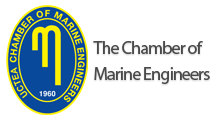

JEMS apply the Creative Commons Attribution NonCommercial 4.0 International Licence to all manuscripts to be published
ABSTRACTING & INDEXING
Volume: 8 Issue: 2 - 2020
| EDITORIAL (ED) | |
| 1. | Editorial Selçuk Nas doi: 10.5505/jems.2020.34635 Page 85 Abstract | |
| FULL TEXT | |
| 2. | Journal of ETA Maritime Science (Volume: 8 Issue: 2, 2020). Pages 85 - 132 Abstract | |
| ORIGINAL RESEARCH (AR) | |
| 3. | Quantitative Analysis of Dynamic Risk Factors for Shipping Operations Serap Göksu, Özcan Arslan doi: 10.5505/jems.2020.63308 Pages 86 - 97 Risk assessment activities on maritime transportation are mostly done through fixed risk assessment forms. However, during maritime operations many different dynamic factors such as visibility, the time period during which the operation is carried out, weather, current speed, tidal status, traffic density, etc. can increase these risks. These dynamic risks are not included in the existing risk assessment forms. In this study, the dynamic factors that increase the risks in ship operations were determined, and to what extent the variables in the operation quantitatively increased various risks was examined through the survey study conducted. Risk coefficients were collected through a survey study, as a data collection tool, conducted on seafarer who participated in ship operations. Consequently, the type of risk assessment to be performed in accordance with the dynamics was evaluated by adding dynamic risks to the possible static risks in cargo operations. |
| 4. | Prediction of Ship Main Engine Failures by Artificial Neural Networks Burak Göksu, Kadir Emrah Erginer doi: 10.5505/jems.2020.90377 Pages 98 - 113 Maintenance practices are considered as the means of providing safety and security to environment and quality service, and despite increasing the costs for companies with certain increments, they contribute to their reputation and reliability. Maintenance planning of ships consists of setting priorities and planning the efficient use of the sources. One of the main objectives of this study is to bring about more profits from commercial activities by optimizing the availability of vessels. Operational capacity is ensured by adopting a systematic and proper maintenance policy that increases effectiveness and efficiency by reducing downtime. To reach at such a target, recently failure data is analyzed and through this analysis certain procedures are developed for spare parts availability and these procedures are utilized in maintenance applications. This study aims to provide an additional feature for predictive maintenance software for the analysis of the upcoming conditions of the main engine systems. In this study, the history of failure in the critical nine main engine related subsystems has been analyzed by artificial neural network method, which is consistent with condition-based maintenance applications and subsequently helps to bring out the potential breakdowns in the recorded history of failure. |
| 5. | Frustration-Aggression-Theory Approach Assessment of sea Piracy and Armed Robbery in Nigerian Industrial Trawler Fishery Sub-Sector of the Blue Economy THEOPHILUS NWOKEDI, Chigozie Uzoma Odumodu, Julius Anyanwu, Declan Dike doi: 10.5505/jems.2020.29053 Pages 114 - 132 The study analyzed the economic cost of output losses as a result of death and injury occasioned by maritime piracy and armed robbery in the ocean trawler fishery sub-sector of Nigeria and the global maritime industry; as economic justification and catalyst for public-private-partnership in reversing the trend of frustration induced aggression of piracy, against the maritime industry in the Atlantic coast of West Africa and Nigeria, through investment in human capital development, youth employment, poverty eradication and community development programmes in the coastal communities of Nigeria. It employed historical design approach where secondary data was obtained and analyzed using the Gross Output Model and the empirical probability model to determine the output losses due to death and injuries to human capital occasioned by pirate attacks in the maritime industry. The empirical probabilities of risks of death, injury, kidnap for ransom, assault, missing of crew, hostage taking of crew and threats of death were also determined. An estimation model was developed for estimating output losses due to death, injury, etc; based on the relationship between the empirical probability coefficients of each risk type, the per capital output of the economy and the number of maritime workers exposed to pirate attacks over a given period in any economy. Public-private participation in development of coastal communities, youth employment, poverty eradication and youth entrepreneurial development programmes was recommended as long-term solution to frustration induced violence of pirate attacks in Nigeria and the Atlantic coast of West Africa. |










